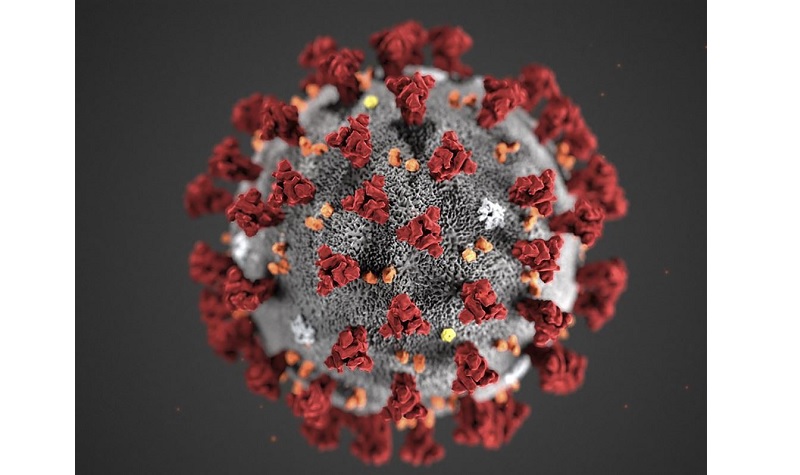From the Dean: On COVID testing
 As we move into May, the COVID-19 pandemic continues, although many parts of the country now seem to be on the descending limb of at least the initial infection curve. To what extent, and how severe, recurrent waves of outbreak will occur still remains unclear. But it seems likely that recurrent episodes of infection can be expected until and unless one of four things occurs: the virus mutates or changes in a way that makes it less infectious; a novel drug treatment is found that attenuates the impact of infection; a vaccine becomes available and is widely utilized; or enough people develop the infection that we get what is called herd immunity, where even the uninfected are protected by those who had the disease in the past and now are immune. But given the significant mortality of COVID-19 (especially in the elderly and those with other medical conditions), herd immunity without a vaccine is something I hope that we don’t have to rely on.
As we move into May, the COVID-19 pandemic continues, although many parts of the country now seem to be on the descending limb of at least the initial infection curve. To what extent, and how severe, recurrent waves of outbreak will occur still remains unclear. But it seems likely that recurrent episodes of infection can be expected until and unless one of four things occurs: the virus mutates or changes in a way that makes it less infectious; a novel drug treatment is found that attenuates the impact of infection; a vaccine becomes available and is widely utilized; or enough people develop the infection that we get what is called herd immunity, where even the uninfected are protected by those who had the disease in the past and now are immune. But given the significant mortality of COVID-19 (especially in the elderly and those with other medical conditions), herd immunity without a vaccine is something I hope that we don’t have to rely on.
Thus, testing for the virus is going to continue to be even more important in the months ahead in order to identify early outbreaks and hotspots of disease. Accordingly, allow me to don my physician/public health hat and talk a little about testing. There are two basic types of tests for COVID-19: one that looks for evidence of active disease by taking a swab from the nose and upper airway to look for evidence of the virus using what is called a PCR analysis (for polymerase chain reaction); and the second (called an antibody test) that looks for evidence that the person had the disease in the past by analyzing a blood sample. The PCR test is well-established and generally reliable (although some problems have been reported when it missed apparent cases of COVID-19), but the antibody tests are a different matter. There are a number of them becoming available, but their reliability in many cases is uncertain.
So a brief digression into testing reliability is in order. Diagnostic tests commonly are evaluated prior to general use by determining their sensitivity and specificity. To do this, the test is used in a group of people who have (or have had) the disease in question, and also in a group of people who do not have (and have not had) the disease. Sensitivity refers to the fraction of people with the disease in question (in this case, COVID-19) who have a positive test result. Specificity is the opposite – it refers to the fraction of people without the disease who have a negative test. A test with less than perfect sensitivity will miss some people with the disease (called a false negative), while less than perfect specificity will result in some people without the disease having a positive test (so-called false positives).
Many tests have sensitivities and specificities of 95 percent or greater. All well and good. But what happens when we use these tests not in the laboratory but in practice to determine who in the community has the disease? Then even tests with pretty good sensitivities and specificities may give problematic results if the disease in question isn’t very common (in epidemiology, we call this low disease prevalence). It turns out that such tests may be misleading in low disease prevalence settings, which is what we have with COVID-19. Although its true prevalence is unclear, the documented prevalence of COVID-19 in North Dakota is a little over a tenth of one percent; that is, a little over one person out of 1,000. Several recent studies have suggested that we are undercounting people with the disease and thus the true prevalence is many times higher. So let’s assume that the true prevalence in North Dakota actually is 3 percent. So for a typical town with 1,000 residents, 30 would have the disease and 970 would not.
Let’s say that we want to see who might have antibodies to COVID-19 and thus may have some degree of immunity. And let’s also assume that the antibody test has a sensitivity of 95 percent and a specificity of 95 percent. What would we find if we examined everyone in that town of 1,000 people? We would identify almost all (28.5 of 30) of the people who had COVID-19 at some point in the past. But here’s the problem – we would incorrectly say that 48.5 of the remaining 970 disease-free individuals had the disease. Thus, a positive test would be wrong more than half the time in this town of 1,000 people! And even if the sensitivity and specificity of another better test were 98 percent each, the test would be falsely positive about four out of ten times.
Perhaps the most important bottom line is this – when you hear about the results of testing, listen carefully for the sensitivity and especially the specificity of the test. The lower the specificity is below 100%, the more dubious you should be about the results, especially in populations where the disease prevalence is thought to be low.
Speaking of testing, we should note that researchers at the UND SMHS have partnered with Altru Health System on the production of a laboratory medium useful for testing for COVID-19.
UND Department of Biomedical Sciences Associate Professors Catherine Brissette, Ph.D., and Matthew Nilles, Ph.D., along with Marijo Roiko, Ph.D., microbiology program director in the Department of Pathology and Laboratory Services for Altru, have produced a viral transport media (VTM) solution used to maintain the stability of a clinical specimen from the point of collection to laboratory testing.
In laboratory science, VTM is a liquid medium used for collection, transport, maintenance and long-term freezer storage of clinical specimens containing viruses, including COVID-19.
The UND-Altru team has produced enough VTM for more than 1,600 COVID-19 tests to be used locally!
This is just another example of the great COVID-19 work being done by our faculty, researchers, and students across departments at the UND SMHS.
Thank you to everyone who is contributing to this fight.
Joshua Wynne, MD, MBA, MPH
Interim President and Vice President for Health Affairs, UND
Dean, UND School of Medicine & Health Sciences



